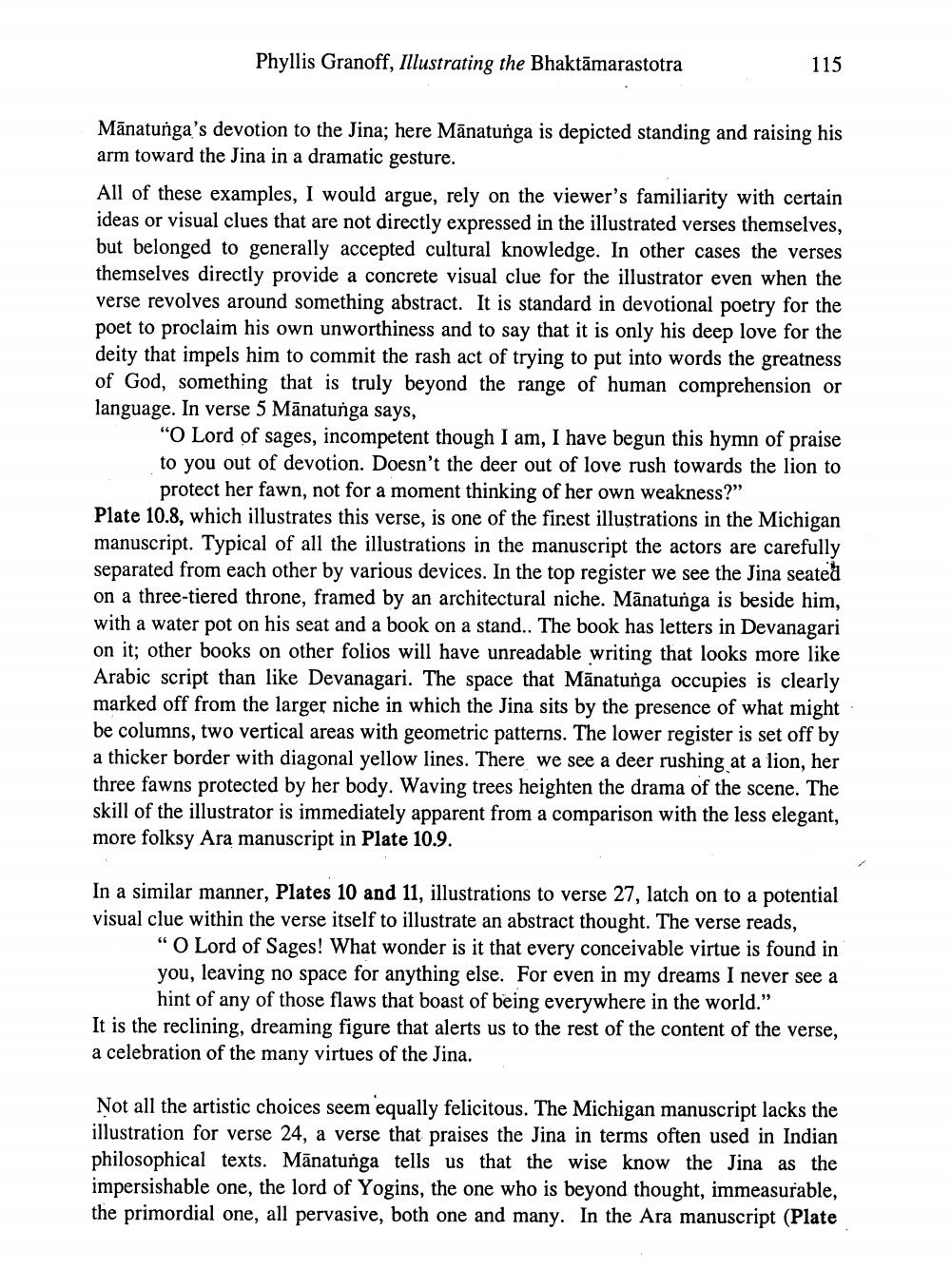________________
Phyllis Granoff, Illustrating the Bhaktāmarastotra
115
Mānatunga's devotion to the Jina; here Mānatunga is depicted standing and raising his arm toward the Jina in a dramatic gesture.
All of these examples, I would argue, rely on the viewer's familiarity with certain ideas or visual clues that are not directly expressed in the illustrated verses themselves, but belonged to generally accepted cultural knowledge. In other cases the verses themselves directly provide a concrete visual clue for the illustrator even when the verse revolves around something abstract. It is standard in devotional poetry for the poet to proclaim his own unworthiness and to say that it is only his deep love for the deity that impels him to commit the rash act of trying to put into words the greatness of God, something that is truly beyond the range of human comprehension or language. In verse 5 Mānatunga says,
"O Lord of sages, incompetent though I am, I have begun this hymn of praise to you out of devotion. Doesn't the deer out of love rush towards the lion to
protect her fawn, not for a moment thinking of her own weakness?”. Plate 10.8, which illustrates this verse, is one of the firest illustrations in the Michigan manuscript. Typical of all the illustrations in the manuscript the actors are carefully separated from each other by various devices. In the top register we see the Jina seated on a three-tiered throne, framed by an architectural niche. Mānatunga is beside him, with a water pot on his seat and a book on a stand.. The book has letters in Devanagari on it; other books on other folios will have unreadable writing that looks more like Arabic script than like Devanagari. The space that Mānatunga occupies is clearly marked off from the larger niche in which the Jina sits by the presence of what might be columns, two vertical areas with geometric patterns. The lower register is set off by a thicker border with diagonal yellow lines. There we see a deer rushing at a lion, her three fawns protected by her body. Waving trees heighten the drama of the scene. The skill of the illustrator is immediately apparent from a comparison with the less elegant, more folksy Ara manuscript in Plate 10.9.
In a similar manner, Plates 10 and 11, illustrations to verse 27, latch on to a potential visual clue within the verse itself to illustrate an abstract thought. The verse reads,
"O Lord of Sages! What wonder is it that every conceivable virtue is found in you, leaving no space for anything else. For even in my dreams I never see a
hint of any of those flaws that boast of being everywhere in the world.” It is the reclining, dreaming figure that alerts us to the rest of the content of the verse, a celebration of the many virtues of the Jina.
Not all the artistic choices seem equally felicitous. The Michigan manuscript lacks the illustration for verse 24, a verse that praises the Jina in terms often used in Indian philosophical texts. Mānatunga tells us that the wise know the Jina as the impersishable one, the lord of Yogins, the one who is beyond thought, immeasurable, the primordial one, all pervasive, both one and many. In the Ara manuscript (Plate




